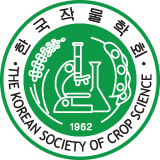Original Research Article
Abstract
References
Information
Ko, K. P., Y. Yeo, J. H. Yoon, C. S. Kim, S. Tokudome, L. T. Ngoan, C. Koriyama, Y. K. Lim, S. H. Chang, H. R. Shin, D. Kang, S. K. Park, C. H Kang, and K. Y. Yoo. 2017. Plasma phytoestrogens concentration and risk of colorectal cancer in two different Asian populations. Clinical Nutrition http://dx.doi.org/10.1016/j.clnu.2017.07.014.
10.1016/j.clnu.2017.07.014Yoneyama, K., T. Akashi, and T. Aoki. 2016. Molecular characterization of soybean pterocarpan 2-dimethylallyltransferase in glyceollin biosynthesis: Local gene and whole-genome duplications of prenyltransferase gene led to the structural diversity of soybean prenylated isoflavonoids. Plant Cell Physiol. 57(12) :2497-2509.
10.1093/pcp/pcw17827986914PMC5159607Yuk, H. J., Y. H. Song, M. J. Curtis-Long, D. W. Kim, S. G. Woo, Y. B. Lee, Z. Uddin, C. Y. Kim, and K. H. Park. 2016. Ethylene induced a high accumulation of dietary isoflavones and expression of isoflavonoid biosynthetic genes in soybean leaves. J. Agric. Food Chem. 64 : 7315-7324.
10.1021/acs.jafc.6b0254327626287- Publisher :The Korean Society of Crop Science
- Publisher(Ko) :한국작물학회
- Journal Title :The Korean Journal of Crop Science
- Journal Title(Ko) :한국작물학회지
- Volume : 65
- No :2
- Pages :84-92
- Received Date : 2020-02-17
- Revised Date : 2020-03-30
- Accepted Date : 2020-04-01
- DOI :https://doi.org/10.7740/kjcs.2020.65.2.084




 The Korean Journal of Crop Science
The Korean Journal of Crop Science








